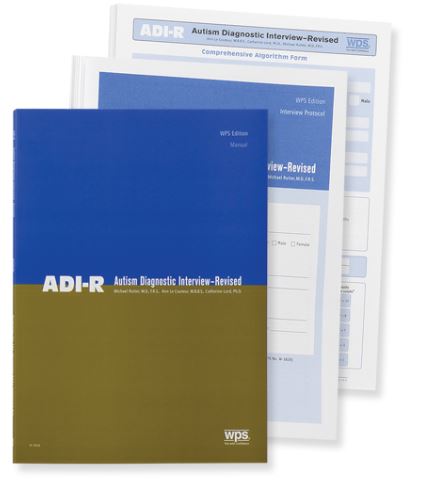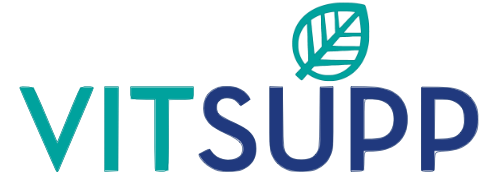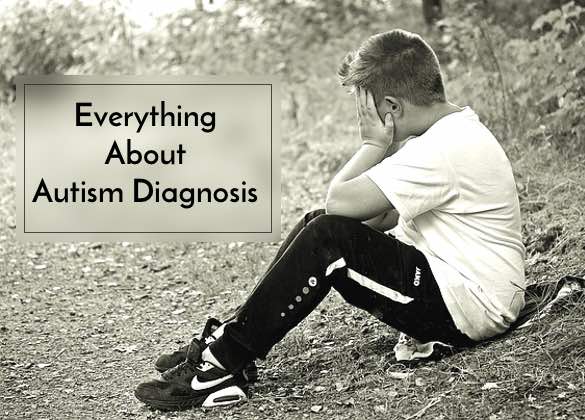The incidence of Autism in on the rise growing at an alarming rate. I have come across several children, who were diagnosed with the Autism (ASD) much later in their life, as challenges faced by these kids in relation to learning, social or emotional difficulties went undiagnosed. This is alarming as a delayed Autism Diagnosis deprives a child with the available early interventions which could really alter the quality of life.
Causes of Autism Diagnosis Delay
Autism is a complex neuro-developmental disorder and as a society we are still learning about it. What makes it much more difficult to diagnose is that there are no medical tests, like a blood test for Autism. There are several probable causes for it. Some say it is genetic and other say it has a biochemical origin. Whatever may be the cause, no two children with autism have identical symptoms. Their severity varies and that is why autism is a spectrum.
Low Awareness & Understanding of Autism
During my interaction with parents I have seen that a child with Autism Spectrum Disorder (ASD) is generally diagnosed / identified in the age group of 18 months to 5 years. We believe anything after 30 months is a delayed diagnosis, as parents themselves take anything between 6-12 months to come to terms with such a diagnosis.
Accepting Autism Diagnosis is difficult for parents
Once parents hear this diagnosis, they are in complete disbelief and at times, hardly have heard of Autism before in their life. Most health practitioners and parents mistakenly club it with mental retardation, which makes acceptance even more difficult. This diagnosis is followed by denial and finally they start to search more about it. Once the search it over and they accept the diagnosis, the most painful period starts when they start to look for resources, which are scarce and expensive.
Even in USA Early Intervention gets delayed
In countries like USA, once a child is diagnosed with Autism, he might not immediately start getting government support in the form of early intervention as he might be wait-listed. What it means is that by the time he gets any support he already might be 4-5 years old.
India is way behind in terms of support structure
In India situation is much worse. Pediatricians in India further lag behind their global counterparts in their ability to accurately discover and diagnose ASD. Therefore in India a child is mostly diagnosed after 30 months of age. At the same time there is no government support and most of the facilities for Autism are in the private sector with exorbitant fee. And even if parents are able to cough up such a fee they are not satisfied with the support they get.
Methods to Diagnose Autism
With appropriate screening (screening here means to identify if a child is at risk of Autism) and diagnosis (confirmation of autism in a child previously screened) it is possible to determine if a child is at risk for autism as young as one year. To appropriately diagnose a child with autism several stakeholders have to play their role. Below is the role of different stakeholders to screen & diagnose a child with autism:
1. Parents Observation:
It is parents who first observe some differences between their child and others in the same age group. However situation could be very different for first time parents as they may not notice the differences, a child with autism have with other children.
Therefore it is very important that during the first year of childhood, pediatricians pay sufficient attention to a child’s developmental milestone and also educates parents about it. Nursing homes and hospitals can carry these developmental milestone on the developmental milestone chart.
Red Flags of Autism every parent must know
As a parent, you also need to plan for it. You need to learn the early signs of autism and become familiar with the typical developmental milestones that your child should be reaching. Below are the red flags that indicates that your child might be at risk of autism spectrum disorder(1):
- No big smiles or other warm, joyful expressions by six months or thereafter
- No back-and-forth sharing of sounds, smiles or other facial expressions by nine months
- No babbling by 12 months
- No back-and-forth gestures such as pointing, showing, reaching or waving by 12 months
- No words by 16 months
- No meaningful, two-word phrases (not including imitating or repeating) by 24 months
- Any loss of speech, babbling or social skills at any age
You can also undergo M-CHAT (Modified Checklist for Autism in Toddlers) to determine if you should consult a practitioner.
2. Developmental Screening by Pediatricians
Parents of a young child visit pediatrician on a regular interval for routine checkup, vaccination etc. This is where role of pediatrician is quite critical. As a parent of a young child, please make sure you discuss with your pediatrician your observations, issues and developmental milestones. Ask him to routinely conduct developmental screening and discuss positives and negatives of it diligently.
During screening(2) he will tell you if your child is learning basic skills at the rate he should, or if he is delayed. During developmental screening the doctor might ask you some questions, be very objective and neutral. Your pediatrician may play a bit with your kid to see how he learns, speaks, behaves, and moves. A delay in any of these areas could be a sign of a problem.
Development Screening Intervals
Below is the interval, when you should go and meet your pediatrician to get your child screened for developmental delays and disabilities:
- 6 months
- 9 months
- 18 months
- 24 months
- 30 months
- You can go for additional screening rounds if there is an increase risk due to
- Preterm birth
- Low birth weight
- Having a sibling with ASD
- Behaviors associated with ASD
As a parent you must ensure that your pediatrician is using screening tools designed to help identify children who might have developmental delays. Please note that these screening tool does not provide a diagnosis of Autism or any other developmental disorder, it just to provide you a hint of the upcoming challenges your child might face. Post these screening test more accurate diagnosis tools may be used by your health care practitioner.
Screening Tools to identify risk of Autism & related disorders
Screening tools does not provide conclusive evidence of developmental delays and does not result in any diagnoses. However is there is a positive results, you must go for a thorough assessment. Below is a list of some screening tools often used for screening:
- Communication and Symbolic Behavior Scales (CSBS): A screening tool applicable for kids of upto 24 months of age for screening of communication and symbolic abilities.
- Ages and Stages Questionnaires (ASQ): General age specific parent completed developmental screening tool to be completed by parents over 19 age-specific areas of communication, gross motor, fine motor, problem-solving, and personal adaptive skills.
- Parents’ Evaluation of Developmental Status (PEDS): Another parent completed general developmental screening tool to screen for developmental and behavioral problems.
- Modified Checklist for Autism in Toddlers (MCHAT): Parent-completed questionnaire designed to identify children at risk for autism in the general population.
- Screening Tool for Autism in Toddlers and Young Children (STAT): An interactive screening tool designed to screen developmental concerns in areas of play, communication, and imitation skills.
If the doctor sees any signs of a problem, a comprehensive diagnostic evaluation is needed. This is when your pediatrician may refer you for a comprehensive evaluation. At this stage you might be meeting one or all of the following:
- Developmental Pediatricians (practitioner who specialises in child development and children with special needs)
- Child Neurologists (practitioner who look into interaction & working of brain, spine, and nerves)
- Child Psychologists (practitioner who understand child’s mind and its development)
3. Rule out other causes by health care practitioners
Though there are no medical tests for autism, but pediatricians or ENT doctors may get engaged to rule out other problems such as hearing loss, vision loss and conditions with learning & paying attention.
4. Confirmation of Diagnosis of Autism or related disorders
Once health care practitioners confirm that their no hearing loss, parents needs to connect with several other health care professionals such as psychologists, neurologists and developmental pediatricians to confirm if a child has autism spectrum disorder. During this stage health care practitioners needs to compare the child’s levels of development and behavior with those of other kids the same age.
To confirm or give a reliable diagnosis of Autism Spectrum Disorder a practitioner may use several diagnostic tools. These tools works on the basis of two primary information source:
- Parents’ descriptions of their child’s development
- Practitioners own observation of the child’s behavior
Diagnostic Tools to confirm Autism & related disorders
Some of the diagnostic tools frequently used are:
- Autism Diagnosis Interview – Revised (ADI-R): A clinical diagnostic instrument for assessing autism in children and adults with mental ages about 18 months and above. It is standardized, semi-structured, investigator-based interview administered by trained clinicians to parents or caregivers of individuals referred for a possible (ASD). The ADI-R includes 93 items and focuses on behavior in three main areas:
- Reciprocal social interaction
- Communication and language
- Restricted and repetitive, stereotyped interests and behaviors.

- Autism Diagnostic Observation Schedule – Generic (ADOS-G): The Autism Diagnostic Observation Schedule–Generic (ADOS-G) is a semistructured, standardized assessment of social interaction, communication, play, and imaginative use of materials for individuals suspected of having autism spectrum disorders. The observational schedule consists of four 30-minute modules, each designed to be administered to different individuals according to their level of expressive language.
- Childhood Autism Rating Scale (CARS): Brief assessment suitable for use with any child over 2 years of age. CARS includes items drawn from five prominent systems for diagnosing autism; each item covers a particular characteristic, ability, or behavior.
- Gilliam Autism Rating Scale – Third Edition (GARS-3): GARS-3 is built to assists teachers, parents, and clinicians in identifying and diagnosing autism in individuals ages 3 through 22 and estimating its severity. The Gilliam Autism Rating Scale, now in its third edition, is one of the most widely used instruments for the assessment of Autism Spectrum Disorder in the world. Items on the GARS-3 are based on the 2013 diagnostic criteria for autism spectrum disorder adopted by the APA and published in the Diagnostic and Statistical Manual of Mental Disorders—Fifth Edition (DSM-5). The instrument consists of 56 clearly stated items describing the characteristic behaviours of persons with autism. The items are grouped into six subscales:
- Restrictive
- Repetitive Behaviours
- Social Interaction
- Social Communication
- Emotional Responses
- Cognitive Style
- Maladaptive Speech.
Benefits of Early Autism Diagnosis
Early diagnosis of Autism and related disorders should be the top most priority for every health care practitioner and parents. As early diagnosis help a parent get ready for the journey ahead. Role of parents is extremely critical in journey of defeating autism.
The several benefits of early diagnosis are as follows:
- Children with autism have difficulty in processing verbal instructions and language. As parents you need to choose a language you would like your child to learn. The earlier you make a selection better it is. This will help your child grasp command over one language.
- With early diagnosis, Early intervention programs can begin early. It is particularly important as the first few months of a child’s life are vital to the development of language and communication skills.
- With early diagnosis you will be able to find mentors, practitioners, who will help you chart out a plan for recovery.
- As a parent you will have time to try other methods to treat autism.
Source:
- Learn the Signs of Autism. Autism Speak.
- Autism from 2 to 9 years of age. Lord C, Risi S, DiLavore PS, Shulman C, Thurm A, Pickles A. Arch Gen Psychiatry. 2006 Jun;63(6):694-701.
- Autism Diagnostic Interview-Revised: a revised version of a diagnostic interview for caregivers of individuals with possible pervasive developmental disorders. Lord C, Rutter M, Le Couteur A.
- The Autism Diagnostic Observation Schedule–Generic: A Standard Measure of Social and Communication Deficits Associated with the Spectrum of Autism. Catherine Lord, Susan Risi, Linda Lambrecht, Edwin H. Cook, Jr., Bennett L. Leventhal, Pamela C. DiLavore, Andrew Pickles, and Michael Rutter.
- Van Bourgondien ME, Marcus LM, Schopler E. Comparison of DSM-III-R and Childhood Autism Rating Scale diagnoses of autism. Journal of Autism and Developmental Disorders 1992;22(4):493-506


